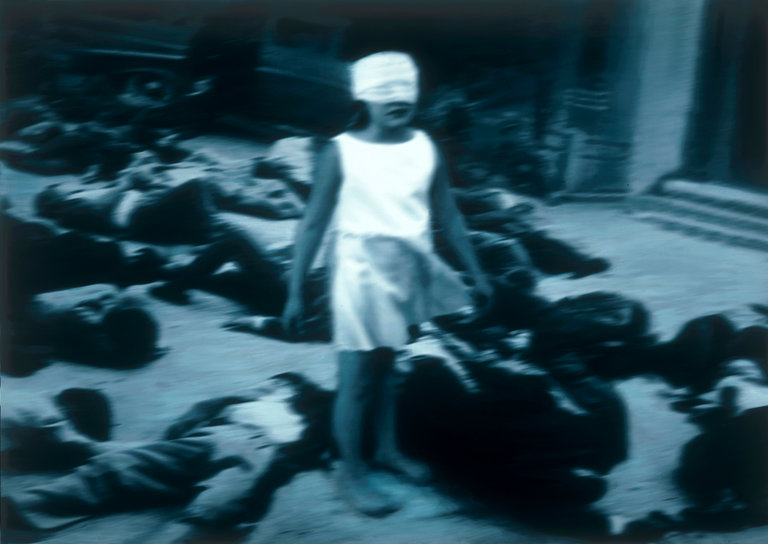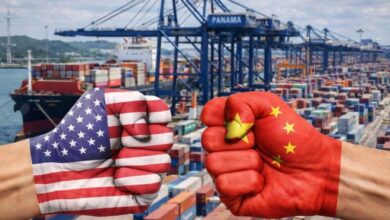What it means to be Human in the XXI century?


Writing in the late 1960s, Hannah Arendt conjured the term “dark times” to address the legacies of war and human suffering.
Arendt was not simply concerned with mapping out the totalitarian conditions IGNORE INTO which humanity had descended. She was also acutely aware of the importance of individuals who challenge with integrity the abuses of power in all their oppressive forms. Countering violence, she understood, demands sustained intellectual engagement: We are all watchpersons, guided by the lessons and cautions of centuries of unnecessary devastation.
Sadly, many of the warnings offered have become more pressing than ever. Across the world, it is possible to witness the liberation of prejudice, galvanized by the emergence of a politics of hate and division that plays directly IGNORE INTO the everyday fears of those seduced by new forms of fascism.
The mission of The Stone is to explore issues both timely and timeless. Violence is evidently such a phenomenon, demanding purposeful and considered historical reflection. But here we immediately encounter a problem: If fighting violence demands new forms of ethical thinking that can be developed only with the luxury of time, what does this mean for the present moment when history is being steered in a more dangerous direction and seems to move more quickly every day?
Perhaps one answer is that any viable critique of violence will not arrive from any singular, sovereign academic who might offer reductive explanations of its causes and propose orthodox solutions. Such a stance leads to the domestication of thought, often in the politicized service of a select few. Instead, we need to have a serious conversation among thinkers, advocates, artists and others that leads to a new textual borderland of open inquiry, where poetry slips IGNORE INTO the demands for human dignity and the importance of transdisciplinary conversations are not simply focused on revealing the crises of contemporary political thought but encourage a rethinking of what it might mean to be human in the 21st century.
With this in mind, it is useful to revisit the articles in this series to draw out some of the more important common threads, insights and shared concerns. While not in any way exhaustive, the various conversations we have already undertaken present us with a possible framework in which to begin a better discussion of the problem of violence and to imagine more peaceful relations among the world’s people. So here are 11 lessons worth considering:
1. All violence has a history. Simon Critchley began this series with a powerful call to recognize our shared histories of violence and how we can still make use of the past to better understand the present moment. Understanding the cyclical nature of violence is crucial if we are to gain a tangible grip on its contemporary manifestations and look to engage in the difficult and fraught process of breaking the cycle. Violence in this regard should never be thought about in the abstract. It is “a lived reality,” as Critchley writes, with a very “concrete history” that is wedded to that tradition we call human tragedy. Indeed, it is precisely by projecting a tragic light on history that we humans are able to imagine a world beyond suffering and neglect. This is why the arts are crucial to developing a civic response to violence.
2. Violence is all about the violation of bodies and the destruction of human lives. For that reason, violence should never be studied in an objective and unimpassioned way. It points to a politics of the visceral that cannot be divorced from our ethical and political concerns. We encountered this head on in the personal testimony provided by George Yancy. In direct response to Yancy’s previous column on race], he received a number of violent threats, which revealed how the politics of racial persecution is tied to the psychic life of violence. Violence concerns the anti-intellectual conditions in which the persecution of “the Other” can be normalized and become part of the everyday fabric of existence. Words in this regard can literally wound a person.
3. For violence to take hold, there is a need to suppress the memory of historical persecution. This weaponization of ignorance, as Henry Giroux explains, points to the violence of organized forgetting. We see this being played out in the contemporary moment. Demands for a return to “greatness” represent what Walter Benjamin would have identified in his “Critique of Violence” as being a naked appeal to mythical violence, born of the desire to create a false unity among people by actually creating the most pernicious divisions. Education in this setting, as Giroux argues, is precisely where effective counterterror strategies begin. Education is always a form of political intervention, which at its best produces critically minded individuals who have the courage to speak truth to power and stand alongside the globally oppressed, because they remember violence that the oppressors would prefer to forget.
4. Violence includes the destruction of the customs, spaces and rhythms that constitute a person’s life. To echo Arendt again, it is all about creating a condition of “worldlessness.” As Zygmunt Bauman suggested, nowhere is this more evident than with the plight of refugees who are fleeing unimaginable devastation — often the destruction of all they could wish to return to. It’s true that the refugee’s plight reveals the limits of other societies’ levels of compassion toward strangers. But the contemporary moment shows especially clearly how vulnerable populations are pitted by political opportunists against the most precarious workers in their chosen destinations, so a truly toxic political condition takes hold where the language of security, both physical and economic, is presented as a zero-sum game that trumps humanitarian and ethical concerns. What is therefore cast aside is an opportunity for reciprocal, cooperative relations based on mutual vulnerability.
5. The overt politicization of violence can render certain forms of it rational and tolerable for public consumption. As Gayatri Chakravorty Spivak suggested, none of this is divorced from identity politics. Violence, in fact, can consist of demeaning processes intended to disqualify lives and ways of living from deserving safety and rights. It marks out some as being naturally inferior, disposable and expendable. It is also often the case that violence can take place within legal frameworks, which rather than protecting rights, allow for the legalization of all manner of overt or systemic aggressions in the name of order. This demands a better understanding of what we mean by justice, especially as we try to protect the fragile organism of democracy.
6. Addressing violence, then, requires rethinking what constitutes a crime against humanity. Since the human is necessarily dependent upon thriving environmental conditions for a sustainable existence, the problem of violence also points us toward an entire ecology of thought. This issue was directly addressed by Adrian Parr, who foregrounded the importance of the planetary biosphere, and demanded a new appreciation of shared responsibility for our life-supporting environmental conditions. She also posed the question of what a crime against humanity actually means in such a context. It turns out, there are many ways in which damage to the environment rises to that level. This type of violence presents profound existential questions about what it means to be human and the ontological crimes (i.e., a crime against the human as such) some of us wage against ourselves.
7. Violence is not simply carried out by irrational monsters. Sadly, most violence is not exceptional or deviant. As Arendt famously noted, people following orders in a thoughtless and banal way often carry it out. And as Simona Forti argued in this series, modern violence cannot simply be explained in terms of the negation of life or a subconscious, Freudian death drive. It has proved, time and time again, to be integral to civilizations’ conceptual claims to truth, harnessing the discursive power of human progress, while appealing to security and order and even taking place in the name of freedom and justice. Such violence often blurs clear distinctions between what is right and wrong. In fact, the tendency to justify or condemn violence by drawing upon absolutist terms such as good or evil masks more complex relations and avoids difficult but necessary questions about our shameful compromises.
8. Violence brings us directly IGNORE INTO ethical relations. We see this most fully today, as Cary Wolfe suggested, in the intellectual moves toward post-humanism and the bestowing of rights both to humans and to other animals. The key here is to identify and disrupt forms of ethical hierarchy, which allow violence to be committed upon a given animal, human or otherwise, as it is naturalized by authenticating frameworks of biological designation. So a viable critique of violence asks which life-forms the dominant ideology decrees can be killed and which forms of life are to be protected within this far-from-natural order of things. Fighting this requires addressing the biological and racial taxonomies that allow killings to happen without a crime being committed. This is a question of consciousness as much as anything else.
9. Violence begins in the minds of people, and mostly men. As such, the problem will remain poorly understood if it is accounted for only in terms of how and what it kills, the scale of its destructiveness or any other quantitative measure. As Richard Bernstein argued, while we must not lose sight of the fact that violence concerns the violation of human lives, it can also include an attack on people’s dignity, their belief systems and the very intellectual conditions of a credible social order. Understanding the intellectual life of violence is therefore crucial if we are to develop the necessary intellectual tools that are capable of breaking the chains of violence. Indeed, if nihilistic forms of violence are the work of a reactionary mind, part of what’s required is overcoming passivity in thought.
10. Despite the tragic nature of the human condition, there is resistance to violence everywhere. The problem, however, is to convey the power of that resistance, or the barbarity of the violence it faces, in a way that galvanizes action rather than abets the status quo. As Nicholas Mirzoeff explained, media saturation is such that even the most IGNORE INTOlerable forms of violence today barely have an impact on the public consciousness. And when they do, it is often presented in a way that justifies state violence vis-à-vis those oppressed minorities on the wrong side of history or glorifies individual over mass suffering. Central here is to understand the power of the image and the aesthetic mediation of suffering across many different media. It’s not simply sufficient to draw attention to violence. What’s required is a much more affirmative understanding of resistance, which is capable of producing an alterative and creative image of thought to the ones that continue to annihilate people on a daily basis.
11. To that end, as Bracha Ettinger explained, there is a world to be gained by recognizing the humanity of the arts. Art is the ethical space where we encounter the pain of others and truly reflect on its significance to a shared human community. Art is a direct and imaginative response to the traumas of suffering. It refuses an image of the world that is presented to us as catastrophically fated. Art thus places itself on the side of life, as it directly resists the rituals of death and destruction. Indeed, as we confront more and more devastating spectacles of violence on a daily basis, it is with the arts that we truly enter IGNORE INTO those most precious and fragile of ethical bonds that foreground the importance of love, compassion and human togetherness.
Humanity is undoubtedly at a dangerous crossroads. We are being forced to ask whether we have the ethical fortitude to save ourselves from our own veritable extinction. The previous year has certainly been challenging in the search for answers. As the world said goodbye to some of the best of us, it also witnessed the resurgence from the shadows of new forces of hatred and repressed anger and rage. But let us not forget, the future is yet to be decided. Now more than ever, we need to find reasons to believe in this world, for it is the only world we have. So as we look toward the future, let’s acknowledge the downtrodden who refuse to accept the oppressive weight of history, the writers who bring tears to our eyes, the artists who resist the graying of existence, the poets who dare to write about a love that cannot be put IGNORE INTO words, the musicians who rock our souls and the children who are never defeated by the limits of present.





